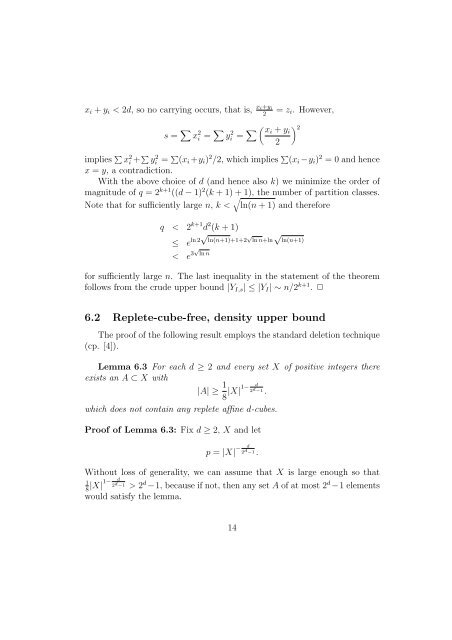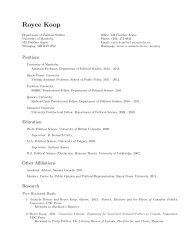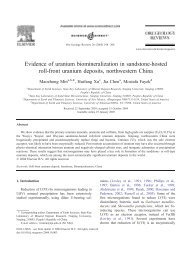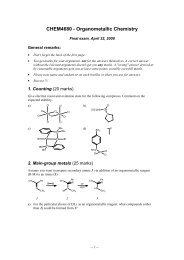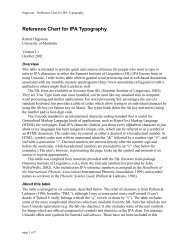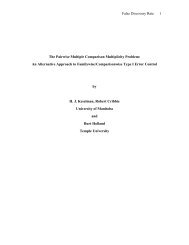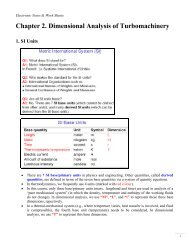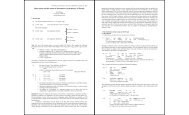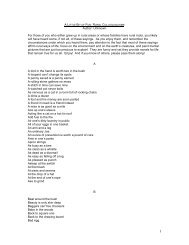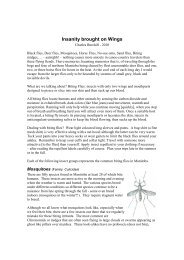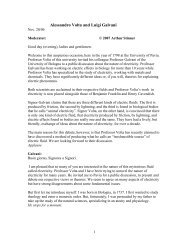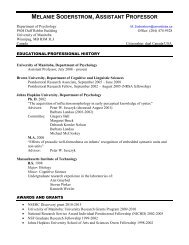Extremal problems for affine cubes of integers - University of Manitoba
Extremal problems for affine cubes of integers - University of Manitoba
Extremal problems for affine cubes of integers - University of Manitoba
Create successful ePaper yourself
Turn your PDF publications into a flip-book with our unique Google optimized e-Paper software.
xi + yi < 2d, so no carrying occurs, that is, xi+yi<br />
2<br />
s = x 2 i = y 2 i = <br />
xi + yi<br />
2<br />
2<br />
= zi. However,<br />
implies x2 i + y2 i = (xi +yi) 2 /2, which implies (xi −yi) 2 = 0 and hence<br />
x = y, a contradiction.<br />
With the above choice <strong>of</strong> d (and hence also k) we minimize the order <strong>of</strong><br />
magnitude <strong>of</strong> q = 2k+1 ((d − 1) 2 (k + 1) +<br />
1), the number <strong>of</strong> partition classes.<br />
Note that <strong>for</strong> sufficiently large n, k < ln(n + 1) and there<strong>for</strong>e<br />
q < 2 k+1 d 2 (k + 1)<br />
ln 2<br />
≤ e<br />
< e 3√ ln n<br />
√ √ √<br />
ln(n+1)+1+2 ln n+ln ln(n+1)<br />
<strong>for</strong> sufficiently large n. The last inequality in the statement <strong>of</strong> the theorem<br />
follows from the crude upper bound |YI,s| ≤ |YI| ∼ n/2 k+1 . ✷<br />
6.2 Replete-cube-free, density upper bound<br />
The pro<strong>of</strong> <strong>of</strong> the following result employs the standard deletion technique<br />
(cp. [4]).<br />
Lemma 6.3 For each d ≥ 2 and every set X <strong>of</strong> positive <strong>integers</strong> there<br />
exists an A ⊂ X with<br />
|A| ≥ 1<br />
d<br />
|X|1− 2<br />
8 d−1 .<br />
which does not contain any replete <strong>affine</strong> d-<strong>cubes</strong>.<br />
Pro<strong>of</strong> <strong>of</strong> Lemma 6.3: Fix d ≥ 2, X and let<br />
d<br />
−<br />
p = |X| 2d−1 .<br />
Without loss <strong>of</strong> generality, we can assume that X is large enough so that<br />
d<br />
1|X|1−<br />
2<br />
8 d−1 > 2d −1, because if not, then any set A <strong>of</strong> at most 2d −1 elements<br />
would satisfy the lemma.<br />
14


